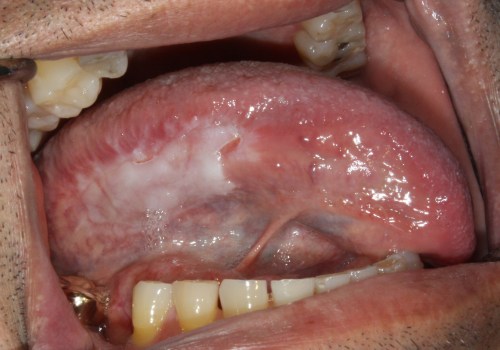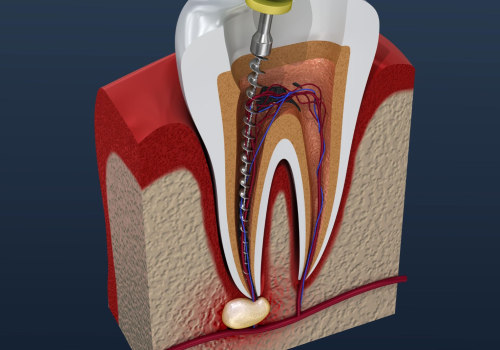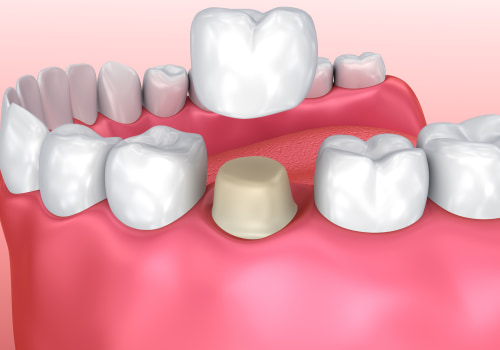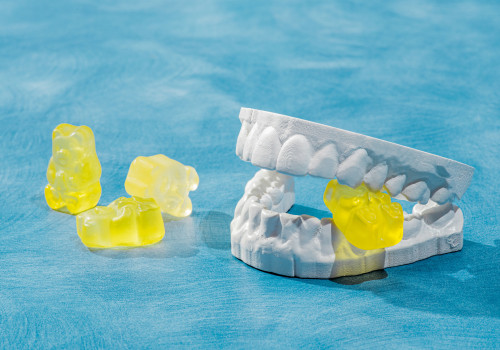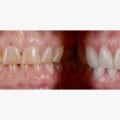Gum disease is an infection of the tissues that surround and support the teeth. It is caused by bacteria that accumulate on the teeth, producing toxins that irritate and inflame the gums. Treating gum disease with antibiotics is an effective way of combating the infection, reducing pain and discomfort, and preventing further damage to the teeth and gums. In this article, we will provide a comprehensive overview of how antibiotics can be used to treat gum disease, as well as discussing the different types of antibiotics available and their potential side effects.
We will also look at how to ensure that the use of antibiotics is both safe and effective, helping you to make an informed decision about your treatment plan. By the end, you should have a better understanding of how antibiotics can help to treat gum disease.
The first step in treating gum disease
is to diagnose it properly. This involves a physical examination of your mouth by a dentist, as well as x-rays to check for signs of infection. Once diagnosed, your dentist may recommend a course of antibiotics to fight the infection.The type of antibiotics used will depend on the severity of the infection and the type of bacteria causing it. Common types of antibiotics used to treat gum disease include penicillin, tetracycline, and clindamycin. Each of these antibiotics works in different ways to attack the bacteria causing the infection. For example, penicillin works by disrupting the cell walls of bacteria, while tetracycline works by inhibiting the growth of bacteria. When taking antibiotics to treat gum disease, it's important to follow your dentist's instructions carefully.
This means taking all doses as prescribed and not skipping any doses. It's also important to finish the entire course of treatment, even if you start to feel better after just a few days. Stopping treatment early can make it harder to get rid of the infection completely. As with any medication, there are potential side effects associated with taking antibiotics for gum disease. Common side effects include nausea, vomiting, diarrhea, and stomach pain.
It's also possible to develop an allergic reaction to certain antibiotics. If you experience any severe side effects while taking antibiotics for gum disease, contact your dentist right away. In addition to taking antibiotics, there are also other treatments available for gum disease. These include scaling and root planing (deep cleaning), periodontal surgery, and laser therapy. Your dentist may recommend one or more of these treatments in combination with antibiotics to help treat your gum disease.
Overall, antibiotics are an effective way to treat gum disease. However, it's important to follow your dentist's instructions carefully and finish the entire course of treatment for best results.
How Antibiotics Work for Gum Disease
Gum disease is an infection caused by bacteria that accumulate in and around the gums. Antibiotics are an effective treatment for gum disease because they target the bacteria that are causing the infection. There are several different types of antibiotics that can be used to treat gum disease, including penicillin, clindamycin, and metronidazole.Each of these antibiotics works in a slightly different way to combat the bacteria that cause gum disease. Penicillin works by inhibiting the growth of bacterial cells. This prevents the bacteria from multiplying, which makes it easier for the body's immune system to fight off the infection. Clindamycin works by disrupting the formation of bacterial cell walls, which prevents bacteria from spreading and reproducing. Metronidazole works by destroying the DNA of bacterial cells, making them unable to replicate. All of these antibiotics are effective at killing the bacteria that cause gum disease, but they can also have side effects.
Common side effects include nausea, vomiting, and diarrhea. It is important to talk to a doctor before starting any antibiotics to make sure they are safe for you.
Types of Antibiotics Used to Treat Gum Disease
Gum disease is a serious dental condition that can lead to tooth decay and other complications if left untreated. Fortunately, there are treatments available for gum disease, including the use of antibiotics. In this article, we'll discuss the various types of antibiotics used to treat gum disease. The most common type of antibiotics used to treat gum disease is penicillin.Penicillin works by killing off the bacteria that cause gum disease. It is an effective treatment for mild cases of gum disease and can be taken in pill form or applied topically. It is important to note that some people may experience side effects from taking penicillin, such as nausea, diarrhea, and allergic reactions. Another type of antibiotic commonly used to treat gum disease is tetracycline. Tetracycline works by stopping the growth of the bacteria that cause gum disease.
It is also available in pill form and can be used both topically and orally. Side effects of tetracycline include nausea, vomiting, and diarrhea. Clindamycin is another antibiotic that can be used to treat gum disease. It works by preventing the growth of bacteria and stopping the spread of infection. Clindamycin is available in pill form and can be taken orally or applied topically.
Side effects of clindamycin include nausea, vomiting, and diarrhea. It is important to consult with your dentist or doctor before taking any antibiotics for gum disease. They will be able to evaluate your condition and determine the best course of treatment for you.
Side Effects Associated with Antibiotics for Gum Disease
Side Effects Associated with Antibiotics for Gum DiseaseAlthough antibiotics are an effective treatment for gum disease, they can also come with some side effects. Common side effects include upset stomach, nausea, and diarrhea. Other possible side effects are headaches, dizziness, and skin rashes.Some antibiotics may also cause allergic reactions. It is important to speak to your doctor or dentist about any potential side effects before starting a course of antibiotics. In some cases, people taking antibiotics to treat gum disease may experience a decrease in the amount of beneficial bacteria in their mouth. This can lead to an increase in the risk of cavities and other dental health problems. Additionally, antibiotics may interact with other medications and cause serious adverse reactions.
Therefore, it is important to let your doctor know about any other medications you are taking before starting a course of antibiotics. Another potential side effect of taking antibiotics for gum disease is an increased risk of developing antibiotic-resistant bacteria. This means that the antibiotics will not be effective against certain types of bacteria, making it harder to treat future infections. It is important to take the entire course of antibiotics prescribed by your doctor to reduce the risk of developing antibiotic-resistant bacteria. If you are considering taking antibiotics for gum disease, it is important to speak to your doctor or dentist first. They will be able to assess your individual situation and determine the best course of treatment for your condition.
Other Treatments for Gum Disease
In addition to antibiotics, there are other treatments available for gum disease.Scaling and root planing is one of the most common treatments used to treat gum disease. This procedure involves the removal of plaque and tartar from below the gum line, as well as smoothing out any rough or jagged areas on the surface of the tooth roots. This helps to eliminate bacteria and promote healing. Periodontal surgery is another option for treating gum disease. This type of surgery is used to treat more severe cases of gum disease, such as when there is a deep pocket between the tooth and the gum line.
Surgery can help to reduce the pocket size, allowing for better cleaning and healthier gums. Laser therapy is also becoming a popular treatment option for gum disease. Laser treatments use high intensity light to kill bacteria and reduce inflammation. Laser treatments have been found to be effective in reducing pocket depth and improving overall gum health.
Scaling and root planing
, periodontal surgery, and laser therapy are all effective treatments for gum disease that can help reduce pocket depths, improve gum health, and reduce inflammation. However, it is important to speak with a dentist or periodontist to determine which treatment option is best for you. Gum disease is a serious dental condition that requires prompt attention and treatment.Antibiotics are an effective way to treat gum disease, but they should be used in combination with other treatments for best results. Different types of antibiotics may be prescribed depending on the severity of the condition, and it is important to follow your dentist's instructions carefully when taking them. Possible side effects should be monitored and reported to your dentist if they become severe. Other treatments, such as improved oral hygiene and scaling and root planing, can also help to control and reduce the symptoms of gum disease.
